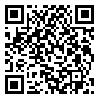

Volume 12, Issue 3 (vol-3 2006)
Intern Med Today 2006, 12(3): 10-16 |
Back to browse issues page
Download citation:
BibTeX | RIS | EndNote | Medlars | ProCite | Reference Manager | RefWorks
Send citation to:



BibTeX | RIS | EndNote | Medlars | ProCite | Reference Manager | RefWorks
Send citation to:
Khosravi A, Minooeyian Haghighi M, Bahonar A. The study of air flora of Gonabad city for allergenic fungi in summer and in spring. Intern Med Today 2006; 12 (3) :10-16
URL: http://imtj.gmu.ac.ir/article-1-57-en.html
URL: http://imtj.gmu.ac.ir/article-1-57-en.html
1- , khosravi@ut.ac.ir
Abstract: (16040 Views)
Abstract
Background and Aim: Allergy (hypersensitivity) is one of the main problems of human communities and is widespread in Iran too. Respiratory allergy is the most important form of it. Among inhalation allergens, fungi have specific situation, because they are found indoors and outdoors. Respiratory allergy is widespread among all age groups but its main effects are on children. It is very important to determine annual and seasonal prevalence of airborne allergens in order to diagnose and take of allergies accurately. The aim of this study is to determine air flora of Gonabad city for allergenic fungi in summer and in spring.
Materials and Methods: In this cross sectional descriptive study Gonabad city was divided into two areas, the countryside and the central area. Then, in each area 15 points were identified and two samples (A and B) were gathered from each point simultaneously. During this investigation, 120 samples (60 samples for each season) were taken from the air of Gonabad in summer and in spring and 1298, colonies belonging to nearly 17 genus of different types of fungi were counted. For sampling, precipitating method (fall spores in petridish) and SC media were used. In addition to morphological structure, mold and yeast colonies were identified by slide culture and biochemical methods respectively.
Results: In this research, the most frequent isolated fungi were as follows: yeast (31%), Cladosporium (30%), Penicillium (19.5%), Aspergillus (5.3%), Alternaria (3.6%), Rhodotorula (2.5%), Strile hyphae (2%) and Fusarium (1.5%) species, respectively. and the least frequent isolated fungi were Auerobasidium (0.2%), Acremonium (0.3%), Mucor and Rhizopus (0.5%), Ulocladium (0.7%) and Candida (0.9%) species, respectively.
Conclusion: Based on the results of this study and Mann-Whitney U test there is a significant relationship between important fungal allergens like Cladosporium, Penicillium, Aspergillus, Alternaria, Fusarium and sampling seasons and areas. So, it is recommended to avoid fungal allergens by using mask, using appropriate filter in air conditioner, using antimoisture sets in home and office and so on.Also identifying allergens can be used in Immunotherapy that can prevent the spread of allergic diseases.
Keywords: Fungus; Allergen; Air; Season; Gonabad
Type of Study: Original |
Subject:
Basic Medical Science
Received: 2007/07/12 | Published: 2006/09/15
Received: 2007/07/12 | Published: 2006/09/15
| Rights and permissions | |
 |
This work is licensed under a Creative Commons Attribution-NonCommercial 4.0 International License. |


